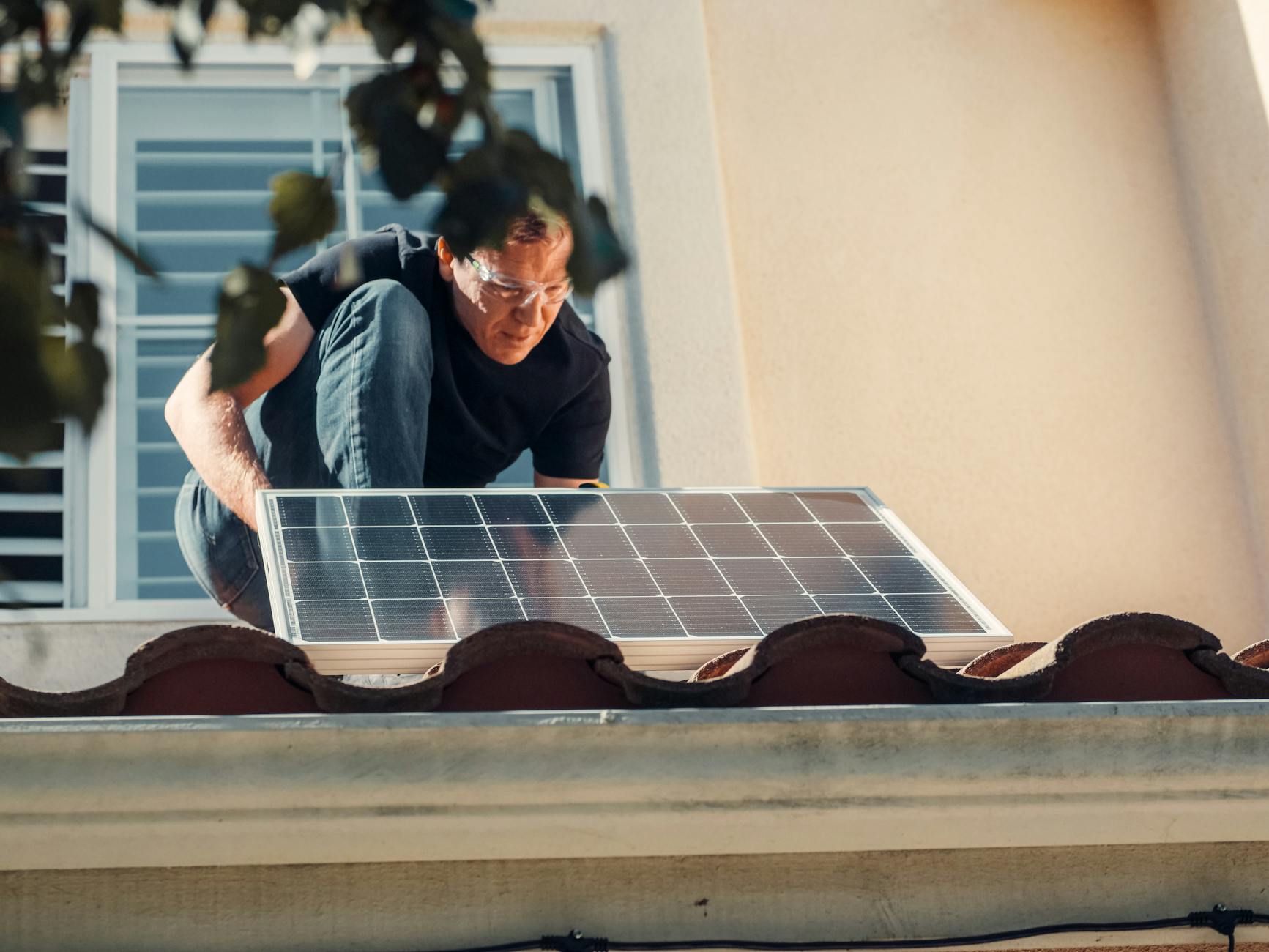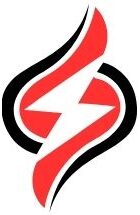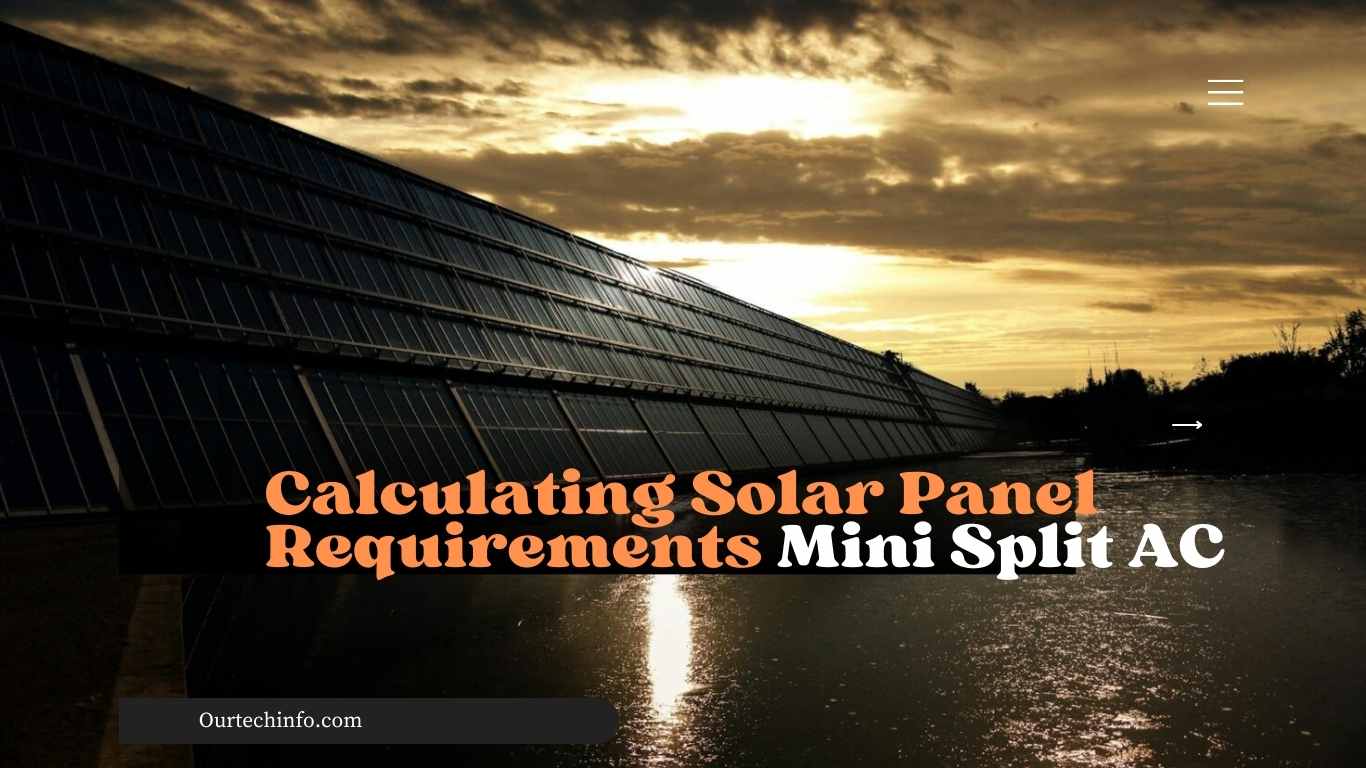Table of Contents
To calculate the solar panel requirements for a mini split AC system, including the battery backup for 5 hours, we’ll need to go through several steps.
- Estimate the power consumption of the mini split AC system.
- Calculate the total energy requirement for the system to operate for a certain number of hours per day.
- Determine the total energy needed for a 5-hour backup.
- Calculate the solar panel requirements based on average sunlight hours.
- Specify battery specifications to meet the backup requirement.
Power Consumption of Mini Split AC
Let’s assume we have a mini split AC system with a power rating of 1,500 Watts (1.5 kW). This is a typical value, but actual power consumption can vary based on the model and efficiency.
Daily Energy Requirement
Assuming the AC runs for 8 hours a day
Daily Energy Consumption=Power Consumption×Hours per DayDaily
Energy Consumption=Power Consumption×Hours per Day
Energy Requirement for 5-Hour Backup
Backup Energy Requirement=Power Consumption×5 hours
Solar Panel Requirement
To calculate the solar panel requirements, we’ll need to know the average peak sunlight hours for the location. Let’s assume an average of 5 peak sunlight hours per day. The formula to calculate the solar panel capacity required is:
Solar Panel Capacity=Total Daily Energy Requirement+
Backup Energy RequirementAverage Peak Sunligh/Average Peak Sunlight Hours
Battery Specifications
The battery capacity needed to support a 5-hour backup can be calculated as follows, assuming the battery is 100% efficient (in reality, efficiency would be less, around 80-90%)
The battery voltage typically ranges from 12V to 48V for such systems, affecting the amp-hour (Ah) calculation:
Battery Capacity(Aℎ)=Battery Capacity(Wh)/Battery Voltage
Let’s perform these calculations.
Based on the calculations, here’s a table summarizing the requirements for powering a mini split AC system with a 1,500 Watt power consumption, including a 5-hour battery backup:
| Parameter | Value |
|---|---|
| Daily Energy Consumption (Wh) | 12,000 Wh |
| Backup Energy Requirement (Wh) | 7,500 Wh |
| Solar Panel Capacity Required (kW) | 3.9 kW |
| Battery Capacity (Ah) @ 24V | 312.5 Ah |
Calculations:
- Daily Energy Consumption: The AC, consuming 1,500 Watts and running for 8 hours a day, would require 12,000 Wh per day.
- Backup Energy Requirement: For a 5-hour backup at the same consumption rate, you would need an additional 7,500 Wh.
- Solar Panel Capacity: To cover the total energy requirement (including backup) with an average of 5 peak sunlight hours per day, you’d need a solar panel system capable of generating approximately 3.9 kW.
- Battery Specifications: To store the backup energy (7,500 Wh), a 24V battery system would need to have a capacity of at least 312.5 Ah.
In this article, we’ll cover all the factors to consider when calculating your solar panel requirements, including the size of your mini split system, the energy consumption of your unit, and the location of your installation. We’ll also provide step-by-step instructions on how to estimate your solar panel needs accurately.
Whether you’re a homeowner looking to go green or a business owner exploring renewable energy options, this guide will provide the information you need to make an informed decision. So let’s dive in and discover the ideal solar panel requirements for your mini split system!
Energy Consumption of Mini Split Systems
Before diving into calculating solar panel requirements, it’s crucial to understand the energy consumption of mini split systems. Mini split systems are highly efficient heating and cooling units that operate differently from traditional HVAC systems. They consist of two main components: an outdoor compressor unit and one or more indoor air handling units.
The energy consumption of a mini split system depends on several factors, including the size of the unit, the desired temperature settings, the insulation of the space being heated or cooled, and the frequency of use. It’s important to have a clear understanding of your mini split system’s energy consumption to accurately calculate the solar panel requirements.
Determining the Total Energy Consumption of Your Mini Split System
To calculate the solar panel requirements for your mini split system, start by determining the total energy consumption of your unit. This can be done by referring to the manufacturer’s specifications or consulting with a professional installer
The energy consumption of mini split systems is typically measured in British Thermal Units (BTUs) or kilowatts (kW). BTUs are commonly used to measure the cooling capacity of the system, while kilowatts indicate the power consumption check out the more details about the solar appliances
Estimating the Solar Panel Capacity Needed Based on Energy Consumption
Once you have the total energy consumption of your mini split system, you can estimate the solar panel capacity needed to meet that demand. Solar panels are rated in watts (W) or kilowatts (kW), representing their power output under standard test conditions.
To estimate the solar panel capacity, divide the total energy consumption of your mini split system by the average daily sunlight hours in your location. This will give you an idea of the minimum solar panel capacity required to meet your energy needs.
Considering the Location and Solar Radiation for Optimal Solar Panel Performance
When calculating solar panel requirements, it’s essential to consider the location and solar radiation levels in your area. The amount of sunlight available varies depending on geographical location, time of year, and weather conditions.
To optimize solar panel performance, you need to ensure that your location receives sufficient sunlight throughout the year. Areas with high solar radiation levels will require fewer solar panels compared to regions with lower levels of solar radiation.
Solar Panel Type and Configuration for Your Mini Split System
Choosing the right solar panel type and configuration is crucial for maximizing the efficiency and performance of your mini split system. There are various types of solar panels available, including monocrystalline, polycrystalline, and thin-film panels.
Each type has its own advantages and considerations, such as efficiency, cost, and aesthetics. It’s essential to research and consult with solar panel experts to determine the most suitable panel type and configuration for your mini split system.
Sizing the Battery Storage System for Reliable Off-Grid Operation
If you’re considering an off-grid mini split system, it’s important to factor in a battery storage system. A battery storage system allows you to store excess solar energy generated during the day and use it during times when sunlight is limited or unavailable

Sizing the battery storage system depends on the energy consumption of your mini split system and the desired autonomy (the number of days the system can operate without solar input). Consult with a professional to ensure you choose the right battery capacity for reliable off-grid operation.
Installation and Maintenance Considerations for Solar Panel Integration with Mini Split Systems
To ensure the seamless integration of solar panels with your mini split system, proper installation and maintenance are crucial. It’s recommended to hire a professional installer who has experience in both solar panel installation and mini split systems.
Regular maintenance, including cleaning the solar panels and checking for any damage or obstructions, is essential to maintain optimal performance. It’s also important to monitor the system’s performance periodically and make adjustments as needed.

